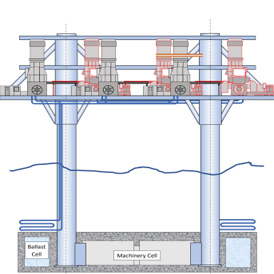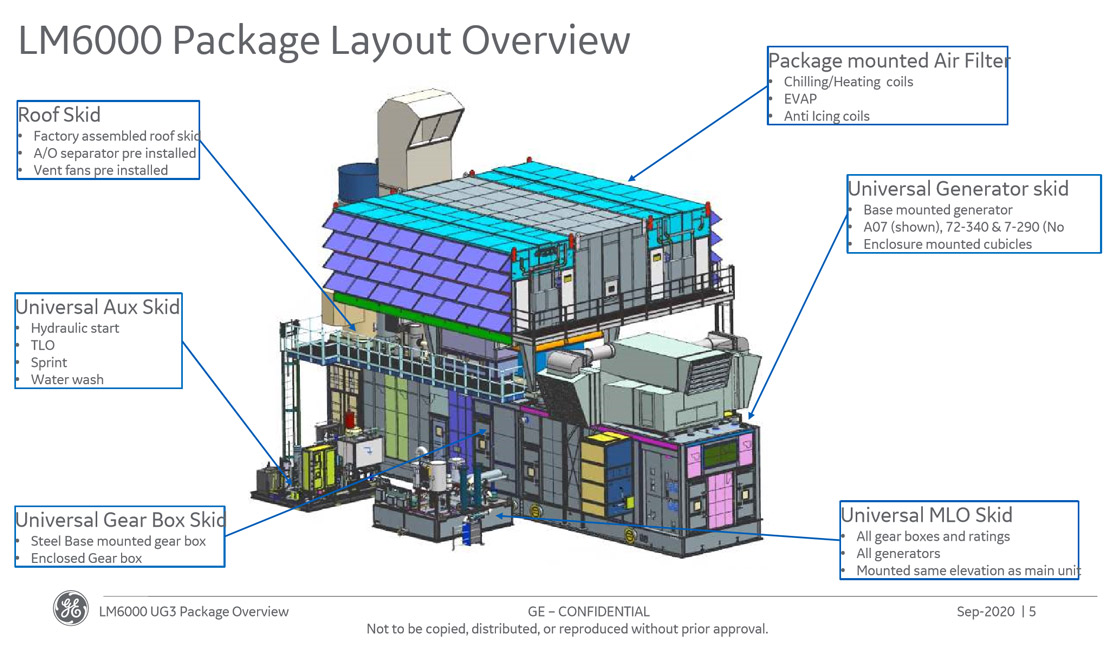The Marine Low Carbon Power Company (“MLCP”) has been formed as a 50:50 partnership between IPC and Oil Gas & Marine of the United Kingdom to generate low carbon electricity offshore using stranded, associated, and non-associated gas reserves. The offshore generation capacity is installed on proprietary Mobile Offshore Generating Units (MOGUs), both shallow and deep water, and the power is then transmitted to shore via submarine power cables. The CO2 produced by the open cycle aero derivative gas turbines is re-injected back into a gas field using tried and testedtechnology.
MLCP has been working with their partners focused on developing a number of low carbon offshore generation Gas to Wire Projects, including projects in the UK Southern North Sea, in the Celtic Sea and offshore West Africa.
These gas-to-power projects generate green and sustainable power by leveraging the following resources:
– Plentiful supplies of offshore gas on the United Kingdom Continental Shelf (UKCS) and elsewhere in the world, providing the fuel needed to run aero-derivative gas turbines in open cycle. These General Electric aero-derivative gas turbines that have been used to power aircrafts for the last fifty years, have a history of very high reliability having the ability to switch on and off at any time, making them ideal both for the supply of peaking power and for periods when grid requires base-load power such as to make-up the absence of renewable energy when wind is not blowing.
– A MOGU providing a flexible, relocatable, cost effective platform creating a new generation of offshore Hubs, each one capable of generating over 300MW of low carbon electricity.
– Carbon Capture and Storage (CCS) plant installed on MOGU capturing the entire exhaust flue gas from the gas turbine generators, stripping the CO2 and safely storing the carbon laden liquid in a secure reservoir.
– Installation of a dedicated submarine power cable to transmit the power to a shore.
Business Concept
MLCP’s business concept is to use a wide variety of offshore gas to generate low carbon electricity offshore which is then transmitted directly to shore.

UKCS Gas Volumes
The United Kingdom holds 7.32 trillion cubic feet of proven gas reserves as of 2017 and MLCP projects are targeting both stranded gas, existing producing gas and new gas fields. MLCP believe that access to offshore gas is not a constraint in the UKCS for the vitally important generation of uninterruptible, on demand power, so important for grid stabilisation and frequency control in the UK and elsewhere.
In order to obtain the volumes and durations of gas required, and to re-inject and store the CO2 securely, the drilling of new wells will be required. It helps that in the Southern North Sea (“SNS”) the geology is well understood through 50 years of exploration and development drilling and SNS drilling is mature, thereby reducing risk and allowing for cost effective gas extraction through existing technologies.

Mobile Offshore Generation Unit, MOGU
The shallow water MOGU is the new use of a tried and tested, self installing platform concept, providing a re-locatable (estimated at circa once every 8 years) offshore production unit able to support and house the aero-derivative GTG and the CCS process system. The development and growth of new offshore MOGU hubs situated throughout the SNS will enable MLCP to tap into multiple sources of gas, both old and new, with a submarine power cables to shore. Initial concepts are designed to generate 300 MW but expansion to 500 MW or more is possible.
The MOGU design also incorporates a dedicated carbon capture and storage (CCS) process system designed and built into the fabric of the platform, capturing all the exhaust flue gas, which being located close to redundant wells and reservoirs, is able to dispose of the carbon laden liquid cost effectively below the seabed and in a safe and secure manner. This localised, smaller scale CCS plan is affordable, far faster to market and has a lower risk profile than other industrial scale concepts requiring government intervention.

Carbon Capture and Storage
The chemical process of separating CO2 from engine exhaust gas is well known and well established. MLCP has in partnership with GE Power developed an alternative total system design with a reconfiguration of existing plant and machinery to produce an economic CO2 capture and disposal process for use offshore.
Injection of the liquid containing the CO2 will be through well into a suitable gas reservoir, certified by the UK Oil and Gas Authority (“OGA”). Reinjection into an oil or gas field is an established process but it does require the target reservoir to be carefully selected so that the carbon rich fluid is in an impermeable, sealed underground environment.

Power System on the MOGU
The power generation package on a MOGU will be based on General Electric LM6000 gas turbine with modular design configured to meet the limited footprint requirements of a unit operating remotely offshore. The approach to modular design allows for footprint reduction as well as for easy shipping and installation, bringing down the installation time for each power block to 5 days.
Furthermore, the modular design allows for ease of maintenance since the turbine core of each block can simply be swapped with a new one and to be overhauled later onshore.
These units are equipped with special control and auxiliary systems required for automatic operation in remote locations.
